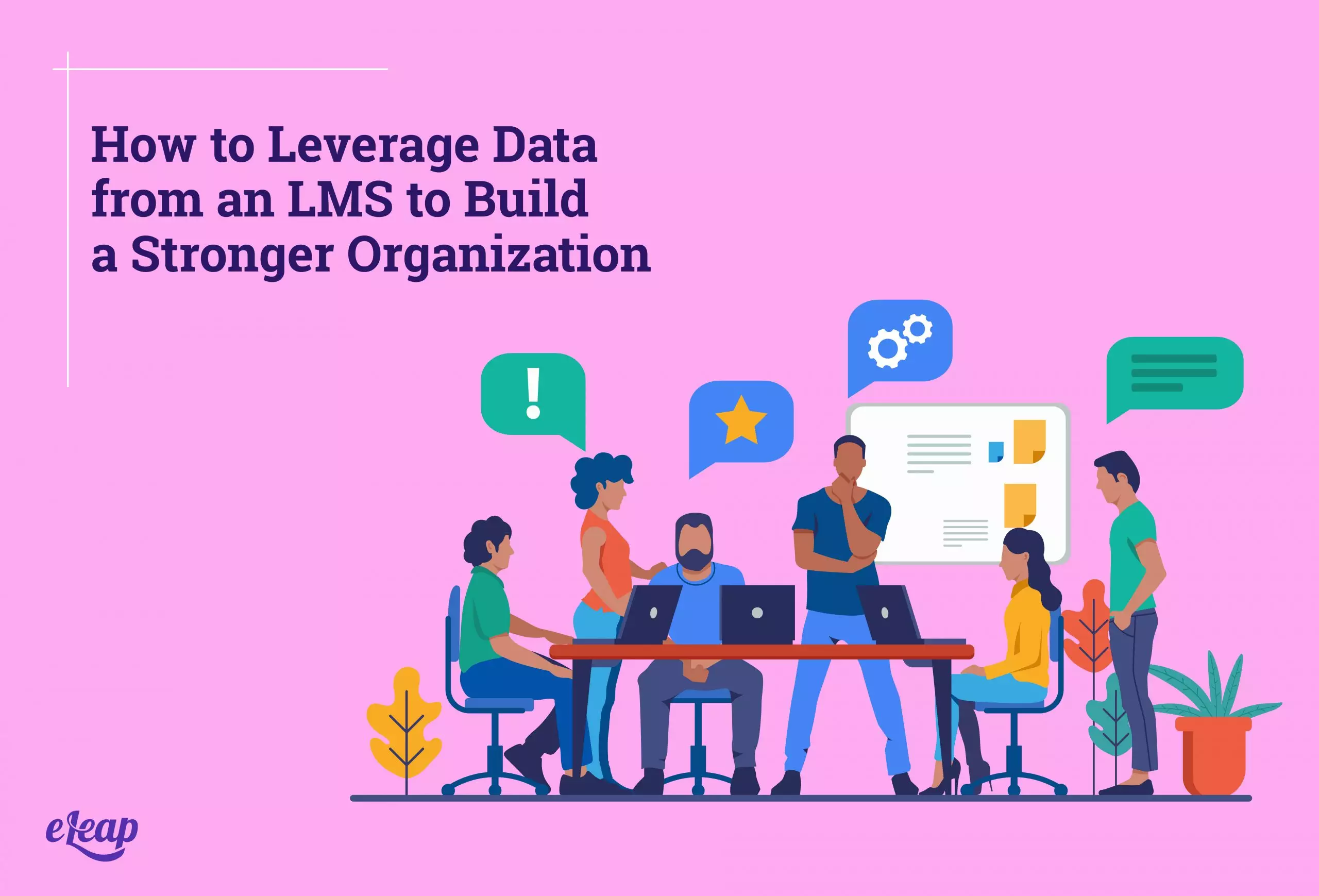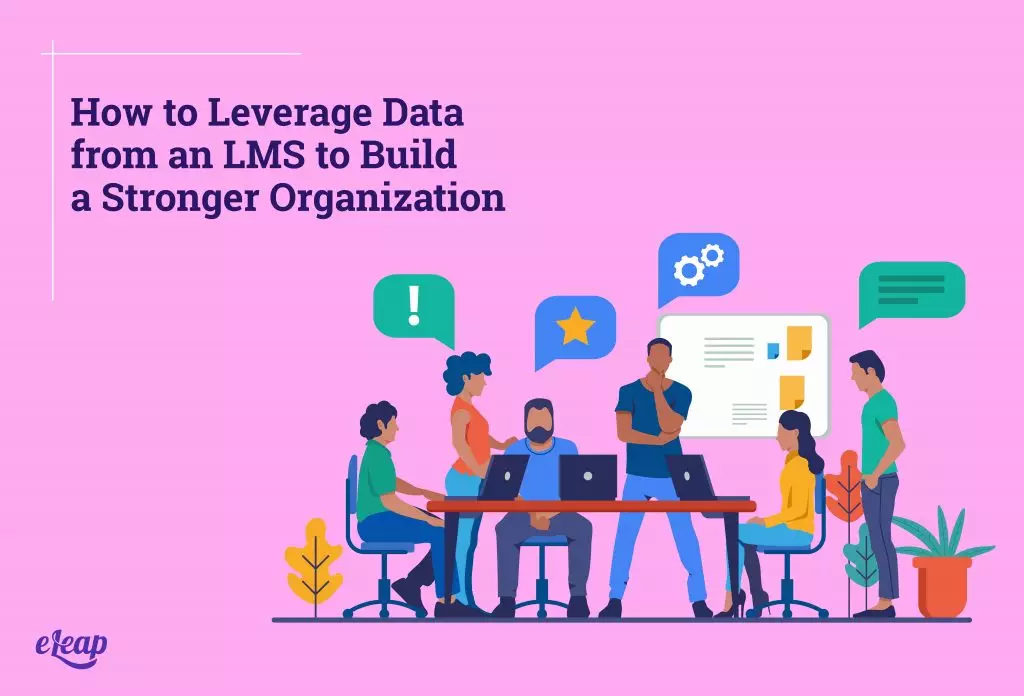How to Leverage Data from an LMS to Build a Stronger Organization

Your organization’s learning management system is a vital asset. It connects learners with learning. It helps build a stronger organization overall, right? Well, it does, but to see that latter benefit, you need to know how to leverage the data within the LMS and apply it to your business or organization. That’s easier said than done, but it is possible. Below, we’ll discuss what you need to know to unlock data in your LMS and apply it accurately to see benefits.

The Unfortunate Picture of “Business as Usual”
Too many business owners, managers, and decision-makers assume that simply instituting a learning management system and then requiring that employees use it is enough. After all, aren’t they being trained in what they need to know? That training is all that’s needed, right? Wrong.
We need to get beyond the picture of business as usual here. The reason that so many people tend to gloss over anything beyond the barebones is that they don’t assign the right value to learning and development. It’s something they’re required to do for compliance reasons, or because it’s a “best practice”, but they fail to see the underlying value that learning and development brings to employees and the business.
In reality, learning and development can deliver impressive benefits and major returns on investment. These are tangible rewards that help you become more competitive, retain key talent, and more. However, to achieve those goals, you need to use the data you have at your fingertips.
What Data?
Actually, asking “what data” you should be looking at is the wrong question. It’s the wrong approach. Instead, think about what business challenge you are trying to overcome. What issue is causing disruption? Where could your business be more competitive, or deliver a better experience to customers, clients, or users?
Let that be your question. How do we _____? Fill in the blank. Once you have that information, you can then turn to your LMS.
KPIs
While the data that you need is locked in your LMS, you’ll need the key to unlock it. That key may come in many shapes and forms. We’re talking about KPIs, or key performance indicators. These act as signs and signals that can help you answer the question you asked in the previous question. Some of the more commonly used KPIs for approaching LMS data include:
- Activity scores
- Number of attempts to pass a quiz
- Percentage of course completion
- Scores/grades
- Progress tracking
- Time spent engaging
Now, you need to analyze the information and identify the data that you need to answer your question. For instance, suppose the question was, “how do we improve our customer service?”. You take a look at your LMS data and find that:
- While many customer service reps have logged into the LMS, none have completed all of the activities.
- One of your full-time customer service reps routinely scores lower on related activities than their peers.
- One of your part-time customer service reps not only has higher scores but requires fewer attempts to pass quizzes and tests.
Now, based on that information, you could extrapolate the following:
- Your customer service is suffering because your reps have not completed all their training.
- You are relying on an employee who is perhaps not well-suited to the role of customer service rep, or who requires performance management to further develop their skills.
- You should be more reliant on the part-time employee who routinely scores better than other employees and requires fewer attempts to pass quizzes. This could be a sign of rising talent that could be further developed with training and the right management.
With this information in hand, you can then develop a strategy to help improve customer service based not on assumptions and guesswork, but concrete data pulled directly from your learning management system. Combine that with modern performance management techniques, and it becomes possible to not only change your customer service for the better but to change the paradigm entirely.
Building Bigger Pictures
As you can see from the information above, leveraging the data in your LMS can provide you with more than one image. You can use that data to study performance in specific departments, talent retention, and more. It’s about creating a wide range of individual pictures and then bringing them together to create a holistic image of the business or organization in question. It’s possible to reveal some incredibly valuable insights, including:
- The impact that training has had on individuals, teams, departments, and the organization itself
- The need for greater personalization in learning, and the improved outcome of personalization and customization
- People and groups within the organization in need of additional training or performance management to achieve key goals and objectives
- How learning is being applied within teams, departments, and across the organization, and whether that application is effective
In Conclusion
Your LMS contains a wealth of information that can be used to unearth critical insights and to inform your decision-making processes. However, you need to begin with the right questions. Define what problems you need to solve within your organization, what changes you hope to see, and then delve into your data.
It’s also important that you have access to the right LMS. Not all platforms provide you with a feature-rich dashboard or make data visible at a glance. Some may not provide much in the way of reporting at all. So, to leverage data within your LMS, you need the right system in the first place, followed by buy-in from all levels that learning and development are important for more than merely meeting compliance requirements. L&D is a critical part of business growth and development and should play a central role within your organization.